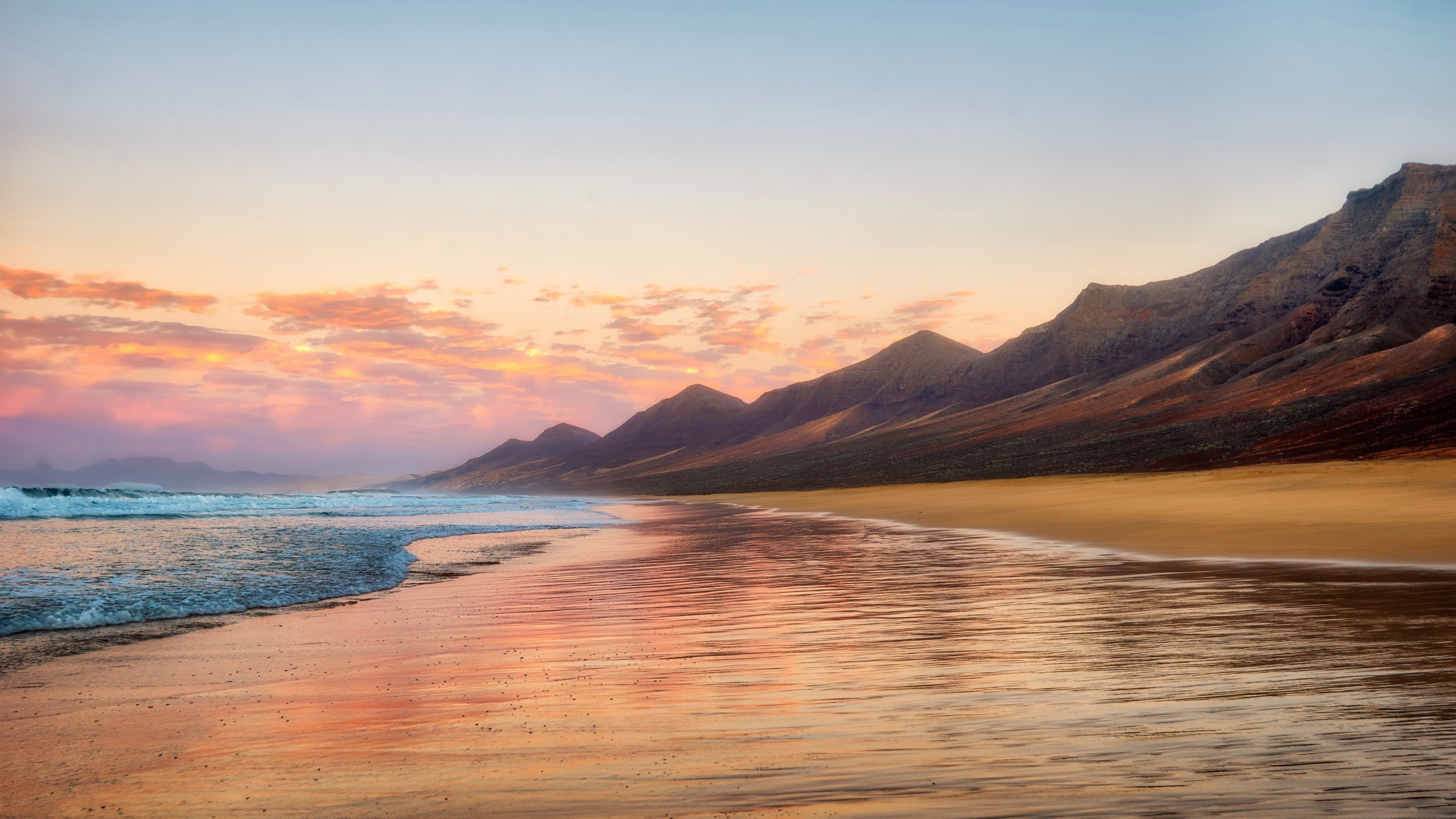Las Canteras, Playa Blanca, La Cueva, El Callejoncito, El Verodal, Almáciga... In the Canary Archipelago you can enjoy its half a thousand beaches throughout the year.
There are all kinds of waves and colors, you simply have to choose the plan that you most want: discover the wild nature of almost virgin enclaves, get lost among tongues of white sand and turquoise beaches or opt for enclaves with all kinds of services and entertainment .
Among all of them, we chose three with special characteristics to live one (or several) dream days.
Cofete Beach (Fuerteventura)
It is not known for sure how the small town of Cofete was formed, in the heart of the Jandía Natural Park, on the Windward coast.
The most popular version is that it was founded by men fleeing military service in the late 19th and early 20th centuries.
There is another version with more filmic tints that speak of Nazis who found in its orography the perfect hiding place for their boats during World War II, a legend for which they rely on Villa Winter, a house designed by the German engineer Gustav Winter (although finished building in 1946, with the war already over).
There is no doubt that there are few places where the sea and the mountains come together in such a spectacular way.
The erosion of the Jandía massif has given rise to an impressive landscape full of peaks that rise 800 meters above sea level, known as Arco de Cofete, among which is the Pico de la Zarza, the highest elevation in the island (807 meters).
At your feet, 14 kilometers of golden golden sand resulting from the disintegration of mollusk shells.
To know more
plans.
The best Spanish beaches of the year
Drafting: LUCIA MERINO.
PHOTOS: SHUTTERSTOCK
The best Spanish beaches of the year
plans.
Faro-hotels: five proposals to sleep with the best views of the sea
Drafting: M. CHANNELS
Faro-hotels: five proposals to sleep with the best views of the sea
La Francesa Beach (La Graciosa)
La Graciosa, the eighth island of the Canary Islands, is not around, short of legends.
Leonardo Torriani
himself
, the renowned Italian military engineer, architect and historian sent by
Philip II
to plan the defense of the islands, placed in it the romance between Armida and Reinaldo in
Jerusalem liberated
by Torquato Tasso.
The most unknown of the Canary Islands would also have inspired
Robert Louis Stevenson
to write
Treasure Island
.
Currently, its streets remain unpaved.
In its 30 square kilometers numerous coves and wild beaches unfold, among which La Francesa Caleta de Sebo stands out, the capital of the island, where the ferry that leaves every half hour from the Port of Orzolá in Lanzarote arrives.
Its turquoise blue sea is usually always calm and can be accessed by a dirt road that runs along the coast.
It is divided in two by rocks and when the tide rises a small lagoon is formed.
In addition, it has an anchoring area for boats.
Castro Beach (Tenerife)
In Los Realejos, the green of the most exuberant and best preserved palm groves in Tenerife merge with the intense blue of the sea.
It does so on the
Rambla de Castro
, a 46-hectare protected landscape.
Its history is linked to the Portuguese merchant
Hernando de Castro
, who helped the crown during the conquest of the island of Tenerife.
As a reward, the
Adelantado Fernández de Lugo
, conqueror of the island and responsible for the distribution of its lands, gave him these lands: an area rich in waters and springs, perfect for growing sugar cane and vines.
(For this reason, the first steam engine used to raise water in Tenerife in 1905 was installed there, in La Gordejuela).
Over time, De Castro designed some spectacular gardens and built a beautiful and elegant mansion that is currently presented with an outstanding yellow color and wooden windows.
The area has enclaves such as
Playa de los Roques
, which is accessed after going through the so-called Sendero del Agua, and
Playa de la Fajana
, both of wild beauty and considerable waves.
But we have chosen
Castro Beach
, the one that is located furthest to the right on the path between the Fortín and the Palmeral, connected to La Fajana by a 100-meter tunnel and a recently opened path.
Crescent-shaped, it is barely 200 meters long and has a beautiful waterfall.
Of course, you have to take advantage when the tide is low to enjoy its delicate black sand.
Conforms to The Trust Project criteria
Know more

